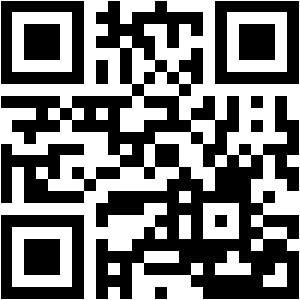| University | Eastern Institute Of Technology (EIT) |
| Subject | BN5.001 Inquiry for Nursing |
Assessment Guidelines
Course BN5.001
Inquiry for Nursing Assessment title Written Assignment – BN5.001
Due date Please see the Assessment Overview on BN5.001 Moodle
Weighting 50%
Learning outcomes
1. Analyse roles in the professional nursing context.
2. Describe interpersonal skills required for nursing practice at a novice level. 3. Discuss how research informs nursing practice (evidence-based practice).
Word Count:
1000 words +/- 10%
References:
APA referencing 7th edition
Formatting BN Formatting
Guidelines Structure:
1. Title page
2. Introduction: Introduce your assignment and what it discusses
3. Evidence-Based Practice: Overview of EBP and its relevance to nursing.
4. Professional Nursing Context: Description and analysis of your selected nursing role and context.
5. Interpersonal Skills: Identification, rationale, and application of two key interpersonal communication skills at a novice level.
6. Conclusion : Summary of key points, reaffirming the importance of EBP in professional nursing contexts.
7. References Step 1 – overview
- Read your assessment guidelines and the marking rubric carefully.
- Check the due date (1st September 0900 hrs 2025).
- Please use Potter & Perry’s Fundamentals of Nursing for at least one of your sources.
Submission with high AI or Plagiarism score will (may) NOT be graded resulting in a fail.
Stuck! Do not Know Assessment Answers?
Hire NZ Native Experts 24/7.
Step 1 – Choose a specific area of nursing (nursing context)
- that interests you, for example, theatre nursing, or paediatric nursing (not limited to these contexts).
- Think about the context of this nursing role – what do they do and where do the work (for example, work in the hospital setting or in the community setting).
- Remember this is at a Novice Level (this does not include Nurse Educator or Clinical Nurse Specialists or Clinical Nurse Manager or any other senior nurse position).
- This is necessary for Step 4 for this assignment.
Step 2 – Introduction
- Clearly and succinctly write an introduction to this written assignment.
- Ensure you state the purpose of this written assignment, which is to meet the 3 learning outcomes above.
- Reference usage is not recommended in your Introduction.
- This section should be approximately 100 words.
Step 3 – Overview of Evidence- Based Practice
- Begin with a brief introduction to evidence-based practice (EBP) and its importance in nursing.
- Highlight how EBP contributes to enhancing nursing practice and improving patient outcomes.
- Please use credible reference sources. • This section should be approximately 200 words.
Step 4 – Professional Nursing Context
- Selection of Context: Choose a specific area of nursing (nursing context) that interests you, for example, theatre nursing, or paediatric nursing (not limited to these contexts).
- Description and role of the nurse: Provide an overview of your chosen nursing area (context) which includes the typical work environment, patient population, and focus of care.
- Analyse the key roles and responsibilities this nursing role undertakes in their area of work. You may refer to the Kai Tiaki Nursing folder under the Written Assignment tab on Moodle or other resources to gain insights into real-life nursing profiles.
- This section should be approximately 250 words.
Step 5 – Interpersonal Communication Skills
- Identification of Skills: Discuss two interpersonal communication skills, at a novice level, that are particularly relevant to your nursing area (context e.g., active listening, eye-contact, or empathy).
- Implementation and Rationale: Explain how these skills can be implemented effectively in your chosen context.
- Provide a rationale supported by evidence from credible reference sources, demonstrating how these skills enhance patient care and improve outcomes.
- Please use your text book Potter & Perry’s Fundamentals of Nursing for at least one of your sources in this section.
- This section should be approximately 300 words.
Step 6 – Conclusion
- Write a short conclusion that summarises the main points of your essay, links back to evidence-based practice and draws a conclusion from your discussion.
- This is not a cut and paste of your introduction.
- Do not include any references in your conclusion.
- This section should be approximately 150 words.
Step 7 – Reference Page–
- finish with a list of all cited in-text sources used (not included in final word count).
Buy Custom Assignment & Homework Solutions
Pay to NZ Native Writers | Cheap Cost & Plag Free
Academic requirements/ Conditions
- Ensure that your assignment document is uploaded as a Word file.
- Be aware that MAC computers require you to change the file compatibility format.
- It is your responsibility to sort out any file compatibility issues.
- Please see EDC or IT services to obtain assistance with this.
- Turnitin may take up to 24 hours to return a similarity score.
- Therefore, please ensure that you give yourself adequate time to put your work through Turnitin, receive a result, and make a necessary change.
- Once this has been through Turnitin submit your assessment to the relevant drop box.
- Please ensure this is not submitted as a ‘draft document’ or this cannot be marked.
- There is to be no copying of any literature or other students’ submissions.
- If you are unsure what plagiarism is and how to avoid it, please refer to EIT’s academic integrity process and plagiarism guidelines. Please see link below.
Any issues surrounding academic integrity breaches will be addressed in relation to these guidelines below:
Plagarism
- Turnitin and submitting Turnitin may take up to 24 hours to return a similarity score.
- Ensure you give yourself adequate time to put your work through Turnitin, receive a similarity score, and make any necessary changes to your work.
Plagiarism Please refer to EIT’s academic misconduct process and plagiarism guidelines. Links below:
http://www2.eit.ac.nz/library/onlineGuides/Plagiarism.pdf http://www2.eit.ac.nz/library/OnlineGuides/Academic%20Misconduct.pdf
- Students who are found to have completed any of these assessments dishonestly will have to meet with the Programme Co-ordinator to discuss the breach in academic integrity and the subsequent sanction.
In quest for a professional assignment help?
Flexible rates compatible with everyone’s budget
Writing the BN5.001 Nursing Assignment can feel challenging when it comes to analysing roles, applying evidence-based practice, and demonstrating communication skills at a novice level. With NZ Assignment Help, you get expert support tailored to nursing standards in New Zealand. Trust our Nursing Assignment Help service to make research, writing, and presentation easier while ensuring quality outcomes.
- LAWS390 Business Law for Māori Organisations Essay | VUW New Zealand
- Nursing Assignment 3 : Factors that Impact Registered Nurses’ Ability to Influence National Government Health Policy
- The Management and Behaviour or Pregnant Sows on Pasture Assignment 1 | Massey University (MU)
- HAS 962 Occupational Hygiene: Measurement Assessment 4 AIOH Technical Report | UOW
- IT00143 Install & Optimize Software Applications Assignment | Pacific Polytech
- Digital Tourism and Hospitality Assignment Report | Auckland University of Technology
- HEAL840 Critical Enquiry for Evidence Based Practice Additional Assessment Opportunity (AAO) Semester 1 2025
- RES903 Research Dissertation Assessment One | Nelson Marlborough Institute of Technology (NMIT)
- 71338 Managing Change Assessment 3 Strategy and Implementation Report | Open Polytechnic
- BSRV4601 Fundamentals Real Estate Assignment 1: Eligibility and licensing | Open Polytechnic (OP)


